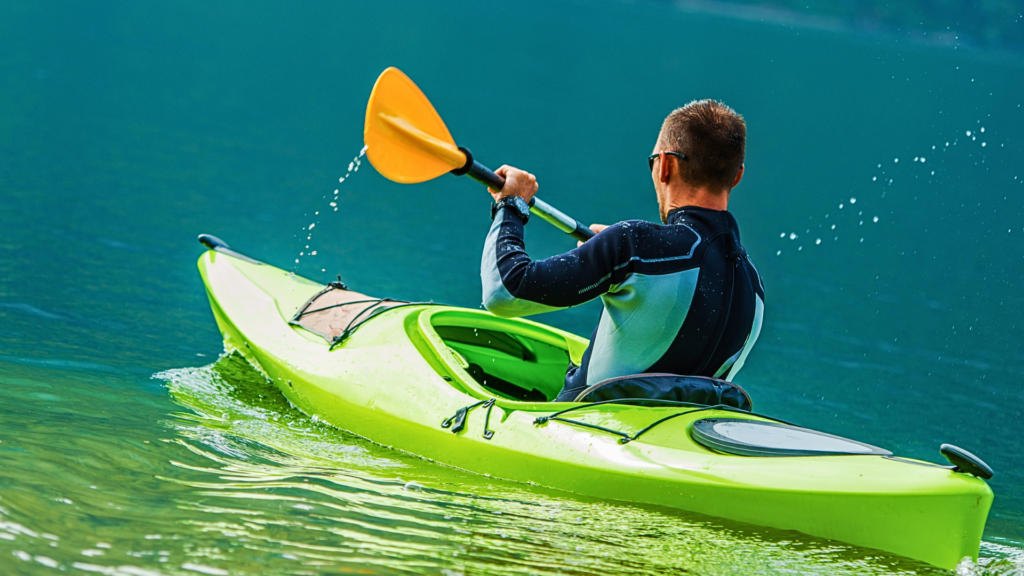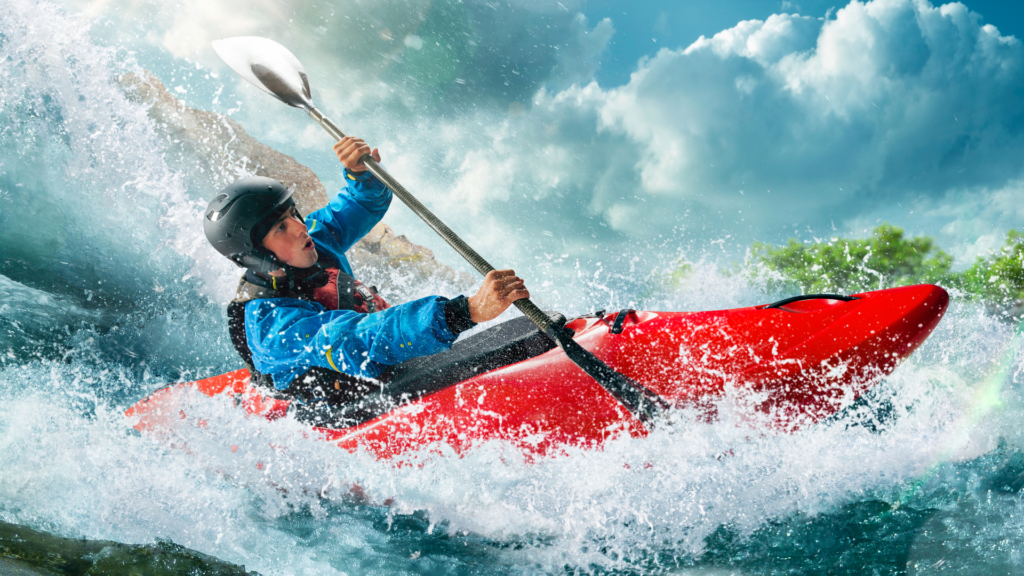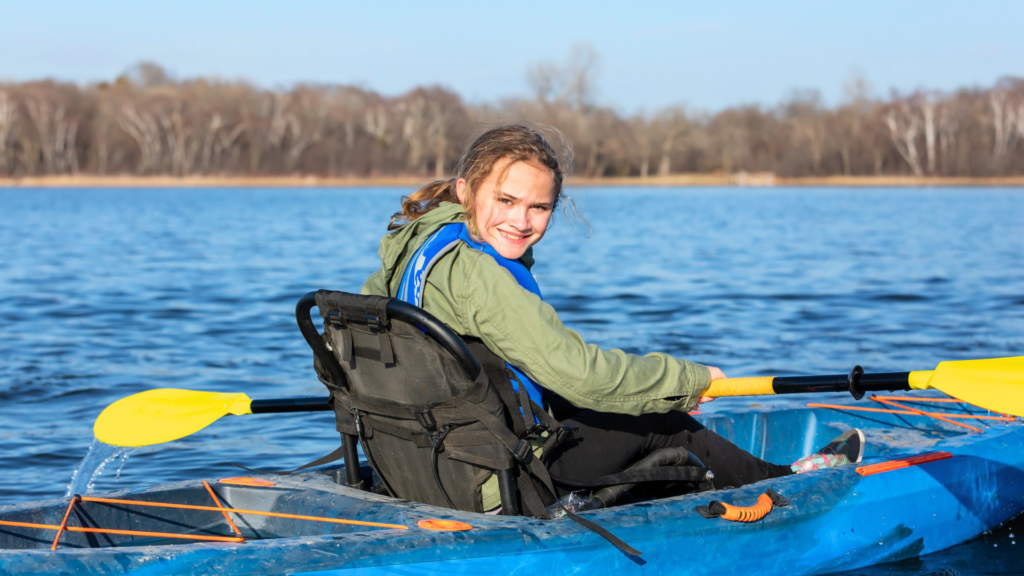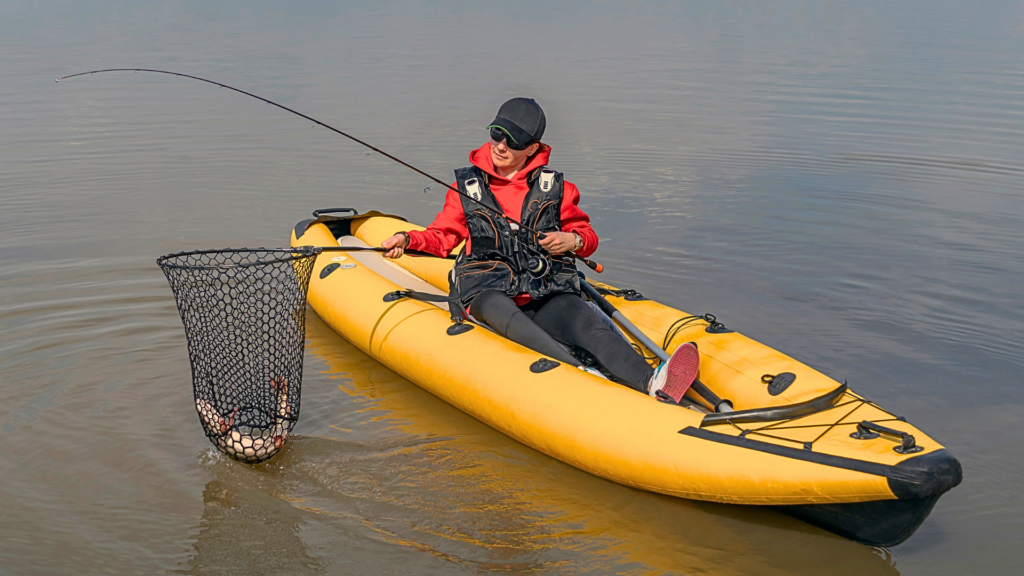Types Of Kayaks & Benefits of Each Kayaks
There are many kayaks available on the market. If you are looking for a kayak, you should know about the different types of kayaks and the benefits of each. It is important to choose a kayak that suits your needs.
If you are new to kayaking, you can start with an inflatable kayak or a sit-on-top kayak. If you have already been kayaking for a while, you might want to consider a kayak with a cockpit.
how many types of kayaks are there
There are various types designed for different purposes and environments. Here are some common kayaks:
Touring kayaks

Touring kayaks come in a range of sizes, from small and lightweight to larger and more expansive. Constructed from a variety of materials, from carbon fiber and plastic to fiberglass, they are designed for stability and maneuverability. Durable and able to withstand the elements, these kayaks are an ideal choice for touring adventures.
sizes
With their compact size and maneuverability, touring kayaks offer the opportunity to explore waterways in a way that is both efficient and enjoyable. When it comes to selecting the right touring kayak, size is an important factor.
The length of a touring kayak typically ranges from 12 to 18 feet, with most averaging around 14 feet. Longer kayaks are usually faster, but shorter kayaks are easier to maneuver and turn. When determining the appropriate size, it is important to consider your physical size. Taller people should typically choose a longer kayak, while shorter people should choose a shorter kayak.
The width of the kayak is also a factor in choosing the right size. Generally, wider kayaks are more stable, while narrower kayaks are faster. Narrower kayaks also fit in tighter spaces, making them easier to transport. When selecting a width, it is important to consider the type of water you will be paddling in.
If you are paddling in open water, you will want a wider kayak for maximum stability. If you will be paddling in tight spaces, a narrower kayak may be the best choice. By considering size, you can select a kayak that best fits your needs. Taking the time to determine the right size can ensure that your kayaking experience is both efficient and enjoyable.
construction materials
The construction materials of touring kayaks vary greatly depending on the manufacturer and the type of kayak. Many modern models are constructed using a combination of fiberglass and plastic, which provides a durable and lightweight vessel. Some manufacturers may also use carbon fiber or Kevlar for added strength and rigidity.
Most kayaks are made with a polyethylene shell, which is designed to be durable and resistant to UV rays. Additionally, some touring kayaks are made with a combination of wood and fiberglass, which ensures maximum strength and durability.
The combination of materials used in the construction of the kayak will add to its overall weight, which should be taken into consideration when deciding on the type of kayak to purchase.
The materials used in the construction of a touring kayak can also affect its stability. For example, kayaks made with a combination of wood and fiberglass are often more stable than those made with plastic or carbon fiber. This is due to the fact that the wood helps to distribute the weight of the kayak evenly across its surface.
Additionally, kayaks made with carbon fiber and Kevlar are also known for their stability, as these materials are more rigid and provide extra support when out on the water. Regardless of the type of material used, the construction of the kayak must be sturdy and able to withstand the stresses of being in the water.
Stability
The next thing to consider when selecting a touring kayak is its stability. Stability is the measure of how much a kayak resists tipping over when it encounters rough water or an uneven weight distribution. It is an important factor for any kayaker, especially those who are new to the sport.
The design of a touring kayak will often incorporate features to aid in its stability. Many will include a wider midsection and flared sides, which increase the surface area of the kayak and make it more resistant to tipping.
Additionally, touring kayaks often feature a keel or skeg, which is a fin-shaped piece of material extending from the stern that helps maintain a straight course. This helps the kayak stay on course even in strong currents or waves and can also provide additional stability.
Touring kayaks tend to be more stable than recreational kayaks and can therefore provide a more comfortable and safe paddling experience. However, it is important to remember that even the most stable kayak can be overturned in certain conditions. Paying attention to the conditions of the water and the weight distribution of the kayaker is essential for avoiding any accidents.
Recreational kayaks

Recreational kayaks provide a unique balance of stability, speed and maneuverability, allowing users to enjoy a variety of outdoor activities. With a wide, flat design, these kayaks deliver exceptional stability while still being able to reach impressive speeds, even with less experienced paddlers. The combination of robust tracking and responsive turning make them ideal for navigating tight waterways and exploring hidden coves.
Stability
By contrast to touring kayaks, recreational kayaks offer increased stability, making them well-suited for entry-level paddlers. With their wider hulls and lower profiles, recreational kayaks provide more buoyancy than touring kayaks, allowing them to remain stable in even the choppiest of waters. Additionally, the wider hull of recreational kayaks increases the kayak’s surface area, creating an even higher degree of stability.
Recreational kayaks have a low center of gravity, keeping them balanced in the water and making them less likely to tip over. The kayaks’ broad decks also provide more room for the paddler to move around, allowing them to shift their weight in order to maintain stability. Furthermore, recreational kayaks are equipped with side rails, which can be used to hold onto when the waters become rough.
The stability of recreational kayaks makes them ideal for paddlers looking to explore rivers and lakes with calm waters. With their added stability, recreational kayaks are also suitable for anglers, as they provide a platform to cast lines and move around to access different areas of the water. This makes recreational kayaks an excellent choice for those looking for an enjoyable and safe day out on the water.
Speed
Leaving the touring kayaks behind, let’s now take a look at recreational kayaks. Whereas touring kayaks are designed to move quickly and efficiently over long distances, recreational kayaks focus more on stability, speed, and maneuverability. In particular, recreational kayaks are built to be lightweight and fast, making them ideal for short recreational trips.
The hull of a recreational kayak is designed to be narrow and round, allowing it to slice through the water with ease. This design also allows recreational kayaks to reach impressive speeds, even when compared to touring kayaks. Even with the narrow design, recreational kayaks are still stable enough to provide a comfortable ride.
Recreational kayaks are powered by lightweight paddles that are designed to move quickly through the water. The blades of the paddles are smaller than those of a touring paddle, allowing them to move through the water with less resistance. The combination of the hull design and the paddles allows recreational kayaks to be incredibly fast and agile, making them a great choice for a fun day on the water.
Maneuverability
Moving on from touring kayaks, recreational kayaks are designed with maneuverability in mind. These vessels are built to offer fluidity and effortless navigation through the water, allowing users to gracefully explore their surroundings. With their shorter and wider design, recreational kayaks are slightly less stable than their touring counterparts but make up for it with their improved maneuverability.
Their shorter and sleeker shape gives recreational kayaks a greater capacity for turning, allowing riders to move through the water with more articulation and precision. Taking advantage of this advantage, kayakers are able to gracefully maneuver through tight turns and navigate obstacles with ease. For this reason, recreational kayaks are the preferred option for those looking to explore confined areas, like coves and estuaries.
The improved mobility of recreational kayaks also grants them great agility in choppy waters. Their ability to quickly turn and accelerate gives users the advantage of quickly changing course and avoiding hazards. The maneuverability of recreational kayaks is also useful for fishing, allowing anglers to move swiftly and quietly, while still being able to adjust their position quickly.
Whitewater kayaks

Whitewater kayaks come in a variety of shapes, from sleek and aerodynamic to wide and stable. The materials used to construct them vary from plastic and fiberglass to carbon fiber, allowing them to be both lightweight and sturdy. Stability is a key factor in whitewater kayaks, allowing the paddler to maneuver confidently even in turbulent waters.
shapes
In comparison to recreational kayaks, whitewater kayaks feature very different shapes. They are shorter in length – often around—and often have a much wider body shape, allowing them to better navigate the rapids. In addition, these kayaks often feature a flat bottom with a slight rocker at the bow and stern.
This makes them well-suited for fast-moving water and enables them to quickly turn and spin in tight spaces. The hulls also feature a sharp edge, which allows the kayak to slice through the water and reduce drag. In essence, these boats are designed to be maneuverable and fast, so they can safely navigate the turbulent waters of whitewater rapids.
materials
In contrast to recreational kayaks, whitewater kayaks are designed to navigate through rivers and rapids with ease. The materials that make up a whitewater kayak are carefully chosen to ensure that they are lightweight, durable, and able to withstand the wear and tear of the environment.
The outer shell of a whitewater kayak is almost always made of a tough, plastic-like material known as polyethylene. This material is resistant to UV rays, impacts, and abrasion. It is also light enough that you can carry it with relative ease to the water. Inside the kayak, layers of foam are used to add buoyancy, flotation, and insulation. They also provide additional protection in the event of a collision.
The seat of a whitewater kayak is usually made of fabric-covered foam. This material is designed to be lightweight, comfortable, and breathable. It is also resistant to water and mildew, which helps to keep you dry and comfortable throughout your journey.
The foot pegs and straps are made from durable nylon webbing that can be adjusted for a custom fit. The paddle is typically made of an aluminum shaft with a plastic blade, which is lightweight and resistant to corrosion.
stability
We now move on to the thrilling world of whitewater kayaks. These vessels are built for speed—for carving through the rapids and tackling the toughest of waters. Stability is of the utmost importance when navigating a wild and unpredictable river.
Whitewater kayaks are designed with a low center of gravity and a long, narrow hull to give the paddler maximum control and maneuverability. The wide hulls and flat bottoms of recreational kayaks are replaced with a narrow, pointed bow and stern that slice through the water like a knife.
Rocker, or the curve of the hull, also assists in navigating the rapids, as it allows the kayak to pivot and spin in the water. With its slim design and pointed ends, whitewater kayaks are remarkably stable and anything but boring.
Sit-in kayaks

Sit-in kayaks are designed to offer the user maximum comfort and stability. Crafted from lightweight yet durable materials, they are built to successfully traverse both calm and choppy waters. With proper care and maintenance, these kayaks can provide years of enjoyable paddling experiences.
Design
Taking a step away from the thrilling whitewater kayaks, sit-in kayaks bring a more relaxed yet still adventurous spirit to the waters. Design is a crucial factor when considering a sit-in kayak, as the shape of the kayak can greatly affect the way it moves and handles in the water.
The design of a sit-in kayak is typically longer and sleeker than that of a whitewater kayak, allowing it to move more efficiently through the water with less effort. The sleek shape also reduces the amount of water that splashes into the kayak when paddling, making sit-in kayaks easier to maneuver and control.
Additionally, the design of a sit-in kayak is more comfortable, as the user is situated lower in the kayak, allowing for better balance and a more relaxed paddling position. The design of a sit-in kayak also contributes to its storage capacity. Sit-in kayaks have a more spacious cockpit area, allowing for more gear and supplies to be stored and carried during longer trips.
Whether you’re taking a day trip or a multi-day adventure, you’ll be able to bring all of the necessary supplies with you. Sit-in kayaks provide a comfortable and efficient ride, making them a great choice for those looking for a more relaxing experience on the water. With the right design, you’ll be able to enjoy a comfortable and enjoyable paddling experience.
Materials
Moving beyond whitewater kayaks, sit-in kayaks offer a different experience for the adventurer. Constructed with different materials than the whitewater variety, sit-in kayaks are designed to be highly durable and lightweight.
The materials used to construct sit-in kayaks range from plastic to fiberglass, and kevlar. Plastic is the most common and often the most economical choice for a sit-in kayak. It is highly durable and scratches can be easily buffed out, however, it is also the heaviest option.
Fiberglass is a more expensive option, but it is the lightest of the three materials and is also highly durable. Kevlar, the most expensive material, is the lightest of the three and is the most durable option.
No matter the material, all sit-in kayaks are designed with stability in mind. The wider hull of the sit-in kayak offers excellent stability, with the added bonus of a higher carrying capacity. Additionally, the sit-in design offers a lower center of gravity, making them more difficult to tip over in rougher waters. No matter the material, a sit-in kayak is sure to provide a safe and secure experience on the water.
Stability
From the swift whitewater of the rapids to the calmer waters of a lake, sit-in kayaks offer great stability. They provide a sturdy platform to paddle from, allowing you to maintain control in any situation.
Sit-in kayaks are designed with a cockpit for the paddler to sit in and are typically wider and flatter than other kayaks. This makes them extremely stable and less prone to tipping. The wider, flatter hull also provides the paddler with more room to move around in the cockpit, allowing them to shift their weight for better balance while paddling.
Sit-in kayaks are also made of durable materials, such as polyethylene, fiberglass, or wood. The material used to construct the kayak influences its stability in the water. Polyethylene is a very durable and strong material, providing the kayak with excellent stability on the water.
Fiberglass is a lightweight material that is also very durable and provides good stability. Wood is a classic material for kayak building and is very strong and sturdy. All of these materials provide a great platform for paddlers to balance on while in the water.
In conclusion, sit-in kayaks offer great stability on the water. Their wide, flat hull design and durable materials make them an ideal choice for paddlers looking for a reliable and stable kayak.
Fishing kayak

Fishing kayaks come in a variety of shapes and sizes to suit different needs. Different materials are used to construct the kayaks, each providing its own unique benefits, from stability to durability and portability. These kayaks come loaded with features, such as adjustable seating, storage compartments, and rod holders, ensuring anglers have everything they need to make the most of their fishing experience.
Types of Fishing Kayaks
Moving on from kayaks for sale, a further level of specialization can be found in fishing kayaks. There are many types of fishing kayaks available, suited to different types of anglers and the waters they fish in. Sit-on-top kayaks are popular and tend to be more stable than other types.
These are great for beginners as they are easy to get in and out of. Sit-in kayaks, on the other hand, are more stable in choppy water and provide more protection against the elements. They are more comfortable too, as they have seats with adjustable backrests and adjustable foot pedals.
Touring kayaks are longer and faster than recreational kayaks and are designed for long-distance trips. Finally, inflatable kayaks, while not as rigid as hardshell kayaks, are more portable and can be easily transported. Fishing kayaks can be tailored to a person’s needs and preferences and can cater to any type of angler.
Materials Used for Fishing Kayaks
Stepping away from the idea of purchasing a kayak, let’s delve into the specifics of fishing kayaks. Materials used for fishing kayaks are chosen for their durability and buoyancy. From plastic to wood to even inflatable, there is a wide range of materials that can be used in the construction of a fishing kayak.
Plastic is the most common material used in the construction of a fishing kayak. This type of kayak is lightweight, easy to maneuver, and durable. It is also resistant to moisture and can be used in a variety of temperatures. It is important to note that plastic will require more maintenance than other materials.
Wood is a good choice for fishing kayaks as it is strong and provides excellent stability on the water. It is also a great choice for those who like to customize their kayak. Wood can be easily manipulated and can be shaped to fit a kayaker’s needs. The downside of wood is that it is heavier than other materials and requires more upkeep.
Finally, inflatable kayaks are becoming increasingly popular for fishing. Inflatable kayaks are lightweight and easy to transport. They are also great for fishing in shallow waters, as they can be easily maneuvered in tight spaces. The downside of an inflatable kayak is that it can be punctured easily and will need to be replaced more often than a plastic or wood kayak.
Features of Fishing Kayaks
Dreaming of long days spent fishing in a kayak? Wonders of the open water await those who invest in a fishing kayak. Not only do fishing kayaks open up the possibility of new fishing spots, but they also come with features that make the experience even better.
Fishing kayaks come with features that make them ideal for anglers. For example, they often come with rod holders that allow you to safely store your rods while you’re paddling. This gives you the freedom to take your time as you paddle to your desired fishing spot.
Fishing kayaks also often come with a range of storage spaces, such as a hatch or tank well. This provides the space to securely store your gear, so you don’t have to worry about leaving anything behind. Another feature of fishing kayaks is their adjustable seats. Not only do they offer comfort, but they also give you the opportunity to adjust your seating position as you fish.
This means you can find the most comfortable position for yourself, so you can stay in the kayak for longer. Investing in a fishing kayak means you can explore the wonders of the water and make your fishing dreams come true.
Conclusion
Kayaking is an enjoyable sport that can be enjoyed by people of all ages. With the right type of kayak, you can explore exciting and different locations. Whether you’re looking for a touring kayak, a recreational kayak, a whitewater kayak, a sit-in kayak, or a fishing kayak, there’s something for everyone.
With such a wide variety of kayaks for sale, it can be difficult to choose the best one for your needs. If you’re still unsure which kayak to get, you can take a helpful quiz to determine the perfect kayak for you. No matter which type of kayak you choose, you’re sure to have a blast on the water.

